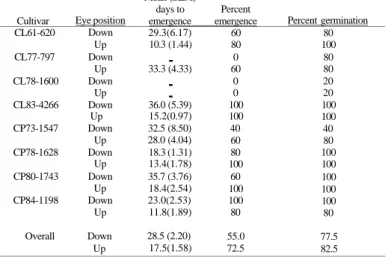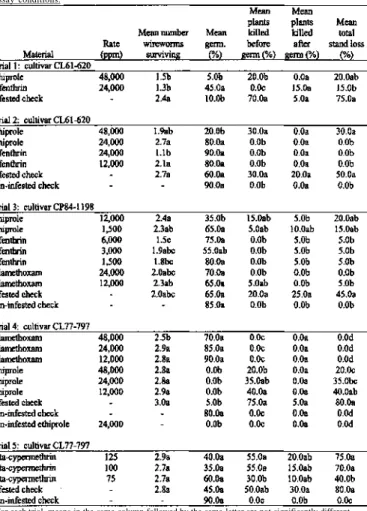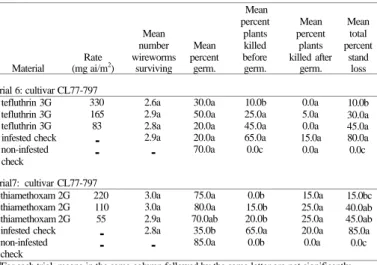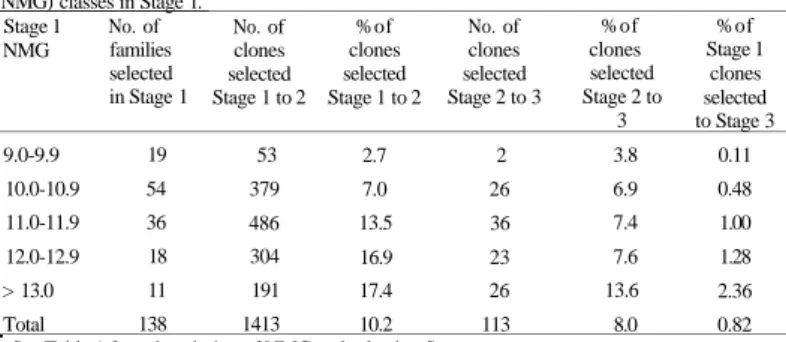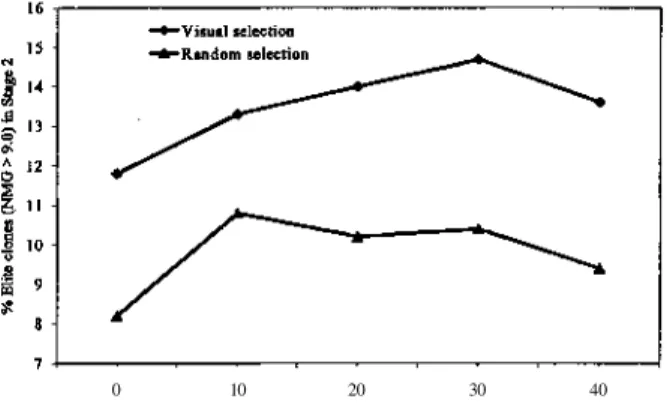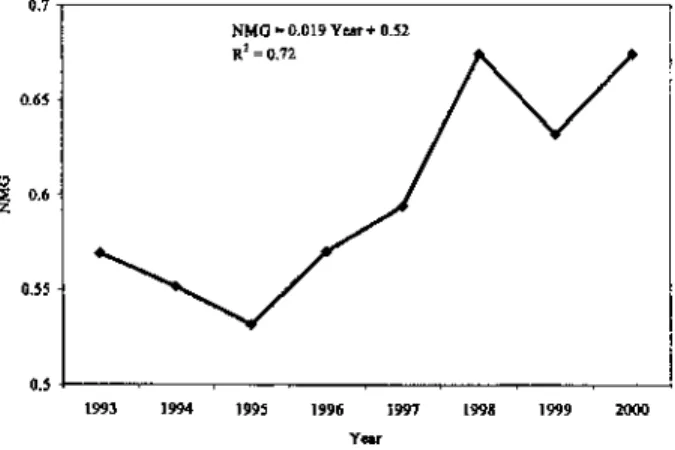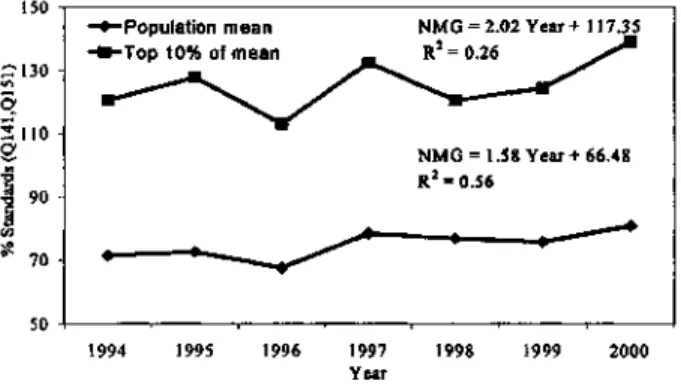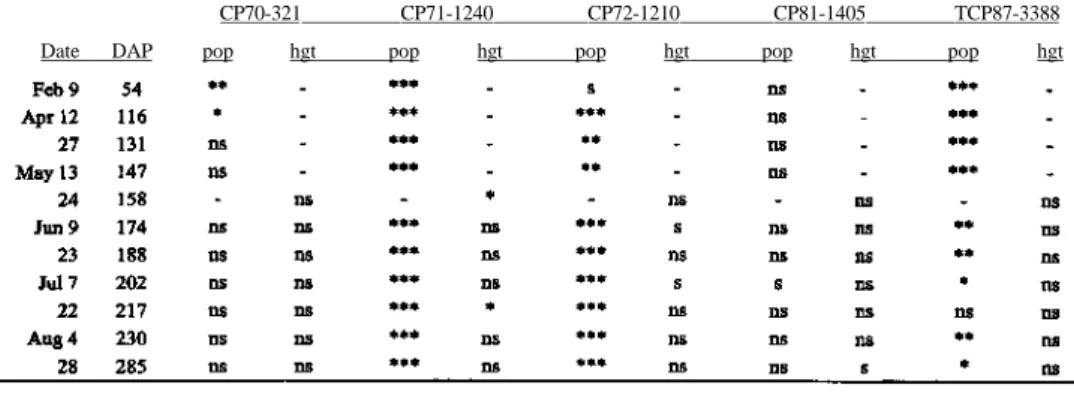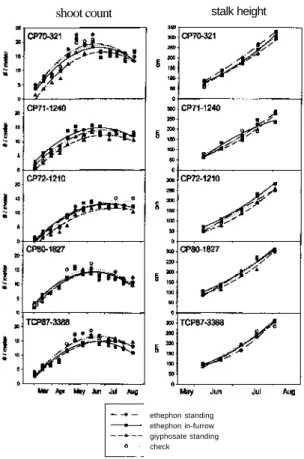The league handles most of the policy issues and lobbying efforts for the industry. These clones were evaluated in stage 2 (first clonal stage) in the plant and first ratoon crops. Adoption of family selection in early-stage trials has positively influenced other aspects of the selection program.
Taken together, this can only lead to an improvement in the overall effectiveness of the selection programmes. Seedling planting rate for the different plant densities in the 2nd and 3rd year of the study. 1 Planting densities used in the 1999 crop were single (low) and double (high) overlap; and in 2000-01 the crop was a reduced (low) and a commercial (high) rate.
The stem diameter was the best predictor of the degree of selection within the regular seedling program. INCIDENCE AND SPREAD OF SUGAR CANE YELLOW LEAF VIRUS IN SUGAR CANE CLONES IN THE CP CULTIVAR DEVELOPMENT PROGRAM AT. The results of this cross-validation were critical in evaluating the tool as an alternative to CPM for sugarcane payment purposes.
A significant portion of the chopper-harvested cane was harvested green, especially early in the season. In the 1993-1995 crop, the sugar cane yield (tonnage and sucrose content) obtained for Aeschynomene was numerically higher than all other cover crop treatments and the control treatment (fallow field without cover crop planted with sugar cane).

Bennett 5
Effect of liming and calcium silicate slag rates and placement on LCP 85-384 plant reeds on a light textured soil. Our research determined the effect of lime and calcium silicate slag and its placement on the yield of cane plants grown on light-textured soils in Louisiana. The results showed that mixing 2.24 Mg ha-1 and 4.48 Mg ha-1 calcium silicate slag into the soil before planting, or placing 2.24 Mg ha-1 slag under sugarcane at planting, resulted in higher (P<0.10) sugar yields compared to the bill.
Analysis of variance for leaf P content showed significant interactions for location by P rate at harvest and for location by P rate at leaf sampling time. Sugarcane growers (interspecific hybrids of Saccharum spp.) in Florida usually apply a soil insecticide at planting to limit wireworm (Melanotus communis Gyll.) damage to planted stem sections. A recent study showed that sugarcane emergence was improved by floods of 2-12 days applied at planting.
The aim of this study was to analyze sugarcane emergence after 7, 14 and 21 days of flooding applied at planting as well as conventional application of an organophosphate insecticide at planting without flooding.
G. Hall United States Sugar Corporation
Journal American Society of Sugarcane Technologists, volume infestation levels, weather conditions, producer economics, environmental concerns, etc.). In the previous studies, more than 80% of the plants each year were infected with strain H. A problem associated with sugarcane breeding is the potential for self-pollination by the mother's wild parents.
The primary objective of the Louisiana "L" Sugarcane Variety Development Program is to effectively develop improved sugarcane cultivars for Louisiana's sugarcane industry. This paper will outline the procedures and techniques used by LSU staff in the seedling production through infield testing phases of the Variety Development Program. No attempt is made to articulate the cause and effect of the technologies, but there are general comments on the experiences with some of the technologies and the possible trends that these technologies may take the industry in the future.
Gas chromatography was used to determine glucose, fructose and sucrose concentrations in and out of the evaporators.
A. Elliott
Concentrations increase from the primary juice to significant levels by the end of the separation process. We monitored the operation of the device in various areas of extraction, steam production and purification to assess the impact of this mode of operation. To solve the problem of soil erosion with the fourth runoff, a field experiment is being conducted at our research site in St.
Gabriel, LA to study the effectiveness of applying polyacrylamide (PAM) to the soil walls of the drainage channel to reduce erosion. In March 2002, PAM was applied as a spray directly to the soil walls of the quarter drains at a dose of 18 kg/ha in a split application with a concentration of 500 ppm. Soil erosion and sedimentation were measured after each storm event to develop a 3-D view of changes in cross-sectional shape of the quarter drains.
Where PAM was not used, progressive deterioration of the side walls of the quarter drainage was visible, including transition points where erosion of up to 3.0 cm was recorded.
Hannig and D. Hall United States Sugar Corporation
The Editorial Committee will consist of a Managing Editor, a Technical Editor for the Agricultural Section and a Technical Editor for the Production Section. The Managing Editor writes to the submitter to inform the author of receipt of the paper and the registration number to be used in all correspondence regarding it. When a paper is returned by the reviewers, the Technical Editor evaluates the paper and the reviewers' recommendations.
The paper registration form is completed and returned to the Managing Editor along with copies of the reviewers' statements and a copy of the technical editor's cover letter to the author. The paper is then sent by the Technical Editor to the Managing Editor who notifies the authors of the paper's acceptance and possible publication dates. Papers sent from the Technical Editor to the Managing Editor are prepared for printing according to the dates of original submission and final approval and according to space available in the next issue of the Journal.
RULES FOR PREPARING PAPER FOR PRINTING IN THE JOURNAL OF THE AMERICAN SOCIETY OF SUGAR CANE TECHNOLOGISTS Format.
Name. Object and Domicile
Membership and Dues
Offshore or foreign members are individuals who do not reside in the continental United States and may be interested in the purposes of the Association. Dues are collected by each division secretary-treasurer from the members in their respective divisions. Only members (all classes) have the privilege of speaking at Association meetings.
The position of secretary-treasurer in this institution means either secretary-treasurer or secretary and treasurer. The secretary-treasurer is appointed by the department's executive committee and serves as a non-voting member. Each section, as described in Article VU, is represented in the Cabinet of the President and Vice President.
In a given year, the presidents of the two sections must be nominated and elected from different sections.
Division Committees
The terms "year" and "consecutive year" as used in Articles V and VI shall be deemed to consist of the time elapsed between an annual meeting of the division of the Association and the meeting of the succeeding annual division of the Association.
Sections
Meetings
The annual meeting of the Louisiana Division shall be held in February of each year at a time to be determined by the Division Executive Committee. The annual meeting of the Florida Division shall be held in September or October of each year, at such time as shall be decided by the Executive Committee of that Division. Special meetings of a section for the discussion of matters of special interest to that section may be called by the President at the request of the relevant chairman of a section.
At meetings of the Division, 10 percent of the active members of the division and the Chairman or Vice-Chairman shall constitute a quorum.
Management
Publications
If the designated managing editor serves more than one year but less than a full three-year term, a technical editor from the same division will fill the unexpired term of the outgoing managing editor. In the event that the Technical Editor declines the appointment, the General Secretary-Treasurer will appoint an Editor-in-Chief from the same department to serve the unexpired term. The "Journal of the American Association of Sugarcane Technologists" will have two technical editors, an Agricultural Editor and a Manufacturing Editor.
The Managing Editor will appoint the Technical Editors for terms not exceeding his/her term. Any member or non-member wishing to contribute to the Journal of the American Society of Cane Sugar Technologists should submit his or her manuscript to the Managing Editor. The Technical Editor will solicit peer reviews until, in the opinion of the Technical Editor, two responsible reviews have been received that either accept (with or without major or minor revision) or reject the manuscript. For articles accepted with major review, it will be the responsibility of the Technical Editor to decide whether the authors have satisfactorily completed major reviews).
The managing editor shall act as technical editor of any manuscript that includes a technical editor as an author.
Amendments
No one shall serve two consecutive terms unless there is no suitable candidate from any section willing to replace the current Managing Editor. If the Managing Editor serves less than one year of his or her three-year term, another candidate is nominated by the same Division, approved by the other Division and appointed by the General Secretary-Treasurer for a full three-year term. Each Section shall at all times be represented by one technical editor, unless the Executive Committee of one Section and the Managing Editor agree that there is no suitable candidate willing to serve from that Section.
Dissolution
After that, the organization is dissolved by legal procedures established by law. Upon dissolution of the joint venture, its assets will be divided equally between the two divisions of the company. The dissolution of the joint venture will not cause the automatic dissolution of any division. Upon dissolution of any division, its assets will be distributed in accordance with the wishes of its members and in accordance with existing IRS regulations and other laws in effect at the time of dissolution.
Assets
